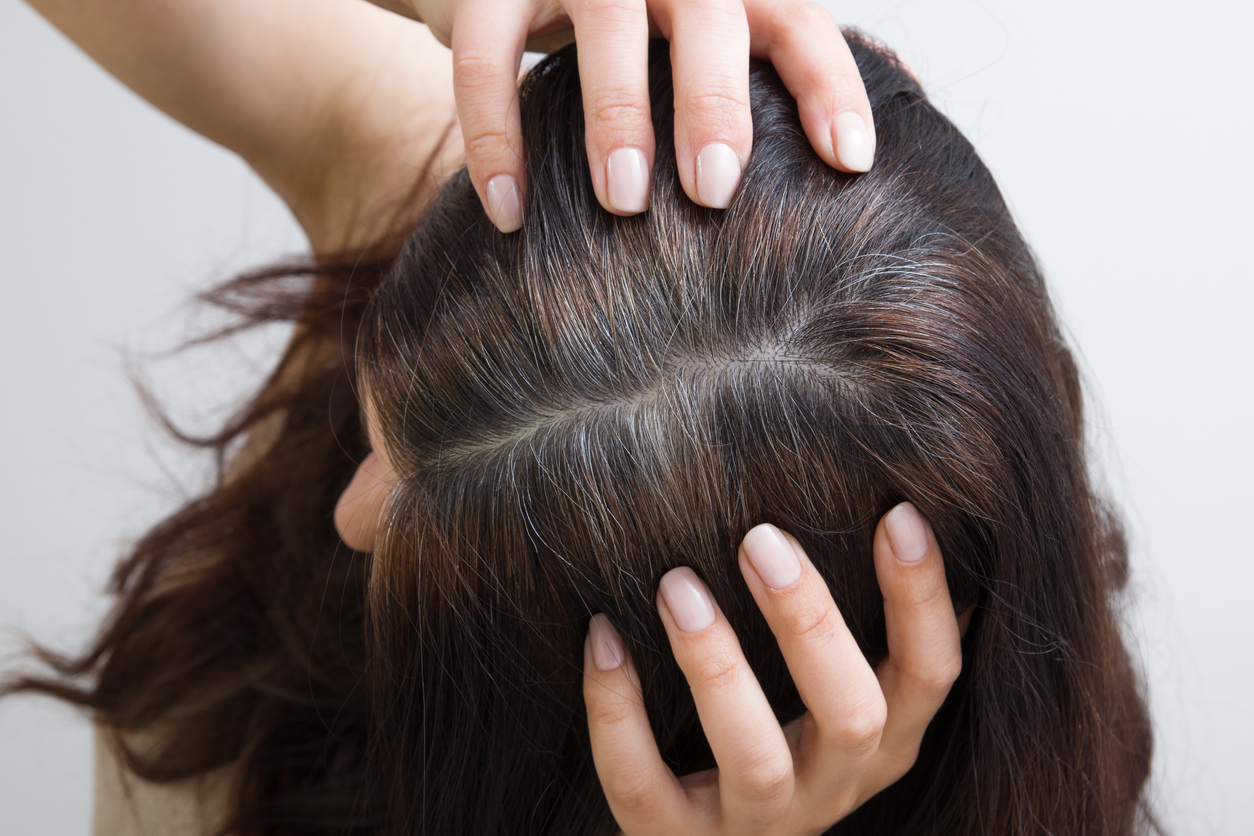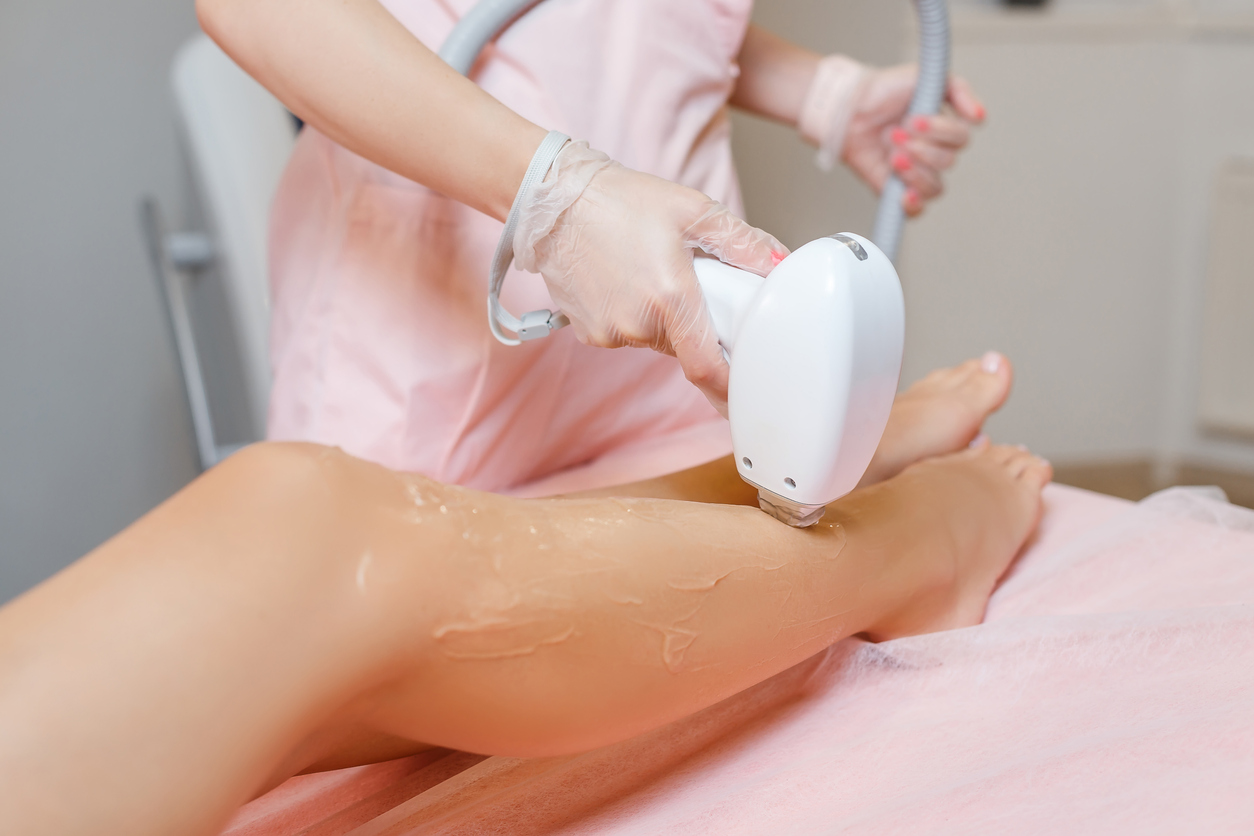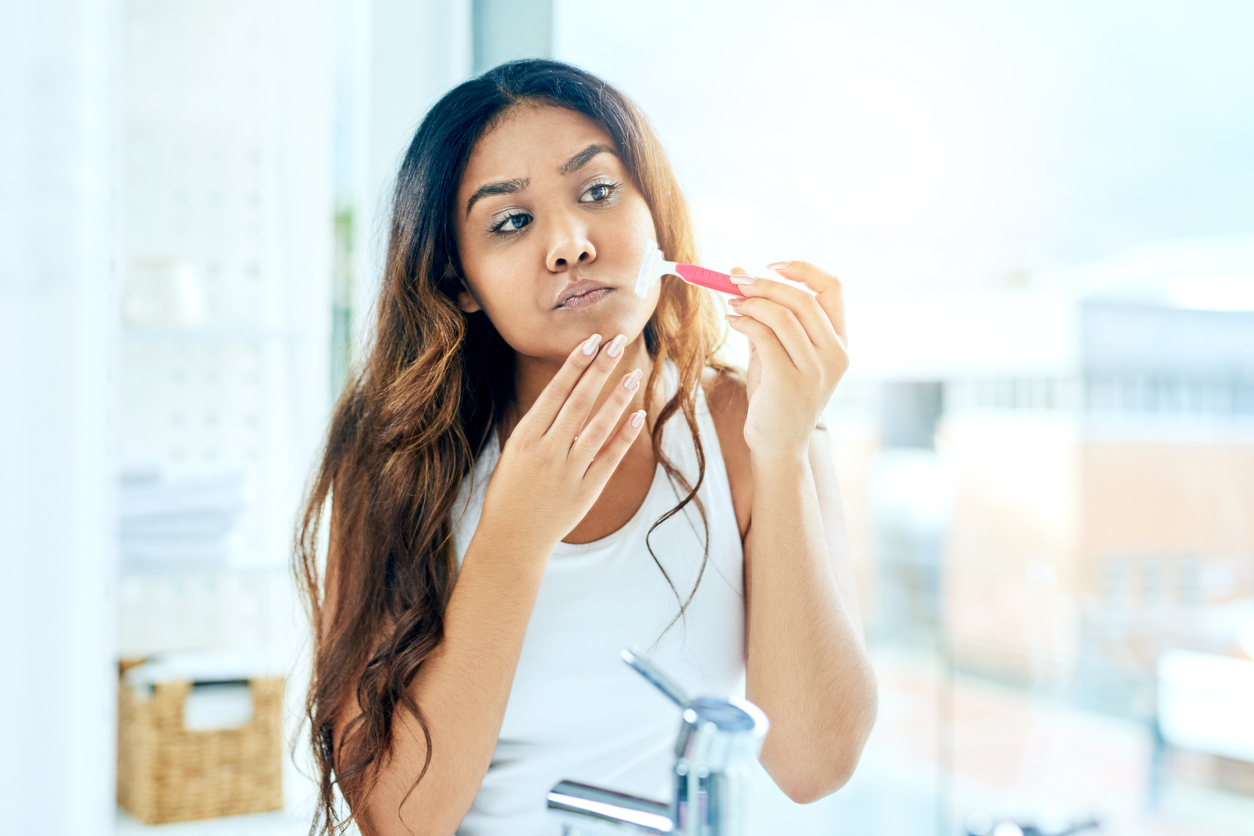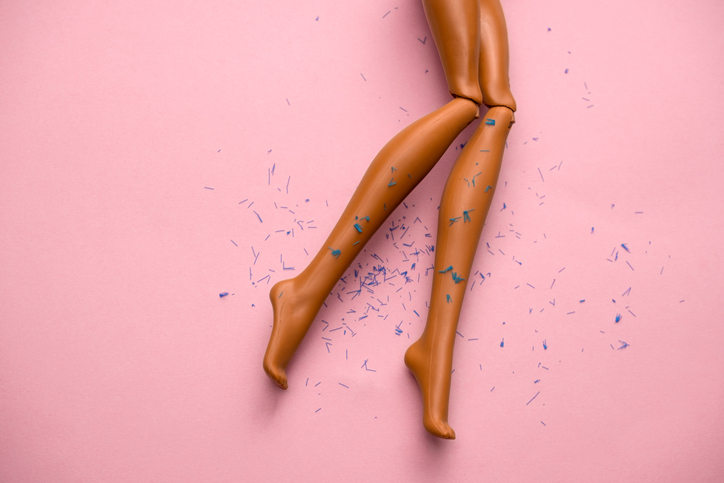Whether it's the chore of shaving or the pain of waxing, choosing a hair removal method can be confusing. Is shaving your face going to lead to a beard? Does waxing cause wrinkles?
We’re here to help you make an informed decision when it comes to getting rid of unwanted hair (if that’s what you want to do). Read on as we separate fact from fiction and debunk the most common hair removal myths.
1. You need to remove your body and facial hair
The expectation to shave, pluck, laser and wax hair from pretty much any area of the body has become normal for women over the years. From a young age, society teaches us that the less hair we have, the more ‘feminine’ we are, and maybe even ‘cleaner’ too (see below).
Regardless of what anyone says, you don’t need to remove your hair. It’s a personal choice. In fact, research shows that with the increase in body positivity more women are ditching hair removal and going au naturel for the first time in decades.
If you do choose to remove face or body hair, read more about the options available to you.
2. It’s cleaner to get rid of pubic hair
One of the most common reasons women give for removing body hair is that it’s more hygienic. A study of 3,316 women in the US found that 59% groomed their pubic hair for ‘hygiene reasons’.
The fact is that removing your pubic hair doesn’t improve hygiene at all. Pubic hair actually plays an important role, acting as a protective barrier to reduce friction during sex and prevent dirt and harmful bacteria from entering your vagina. That said, it is still safe to remove your pubic hair if that’s your preference. Read more about how to remove and trim pubic hair safely.
3. Shaving makes hair grow back thicker and darker
Despite this commonly held belief, shaving doesn’t affect the thickness and colour of your hair. Shaving cuts hair at the surface of your skin. So, when it starts to grow again, the blunt tip doesn’t have the naturally-lightened tapered hair ends that longer hair does. This makes it look like hair is thicker and darker even though it isn’t.
If you notice you suddenly have more facial or body hair than usual, talk to your doctor. It could be as a result of a medication you’re taking or a sign of an underlying medical condition.
4. If you shave your face, you’ll grow a beard
There’s no evidence that shaving facial hair makes it grow back thicker and faster.
Like with body hair, shaving facial hair gives the hair a blunt tip but doesn’t go deeper to affect the root of the hair. In fact, how fast your facial hair grows is mainly down to your genes.
5. Using a blunt razor will prevent cuts
It's easy to understand why you’d think that a blunt razor might help prevent cuts. But it's just not true. A new, sharp blade results in a cleaner, closer and quicker shave.
Shaving with a dull, blunt blade can mean you need to shave the same area over and over. This can irritate the skin and you're also more likely to catch your skin and cut yourself. So, to prevent cuts and irritation always use a sharp razor and change the blades as they become blunt or damaged.
6. You should always shave against the grain of your hair
The debate goes that shaving against the direction of your hair growth allows you to get a closer shave and smoother skin. But is there any truth in it?
Shaving against the grain can help you get closer to the skin, but it also increases your risk of skin irritation as the razor can tug the hair before it cuts it. Shaving with the grain can help prevent razor bumps, burns and even ingrown hairs. So the next time you shave, give it a go and see if it helps reduce irritation.

7. Laser hair removal won’t work on darker skin tones
Many think that laser hair removal only works on lighter skin tones. But this isn’t true.
Most lasers work by targeting hair at the root to damage the follicle. A concentrated beam of light from the laser enters the skin and is absorbed by the pigment (melanin) in the hair follicle. This destroys the hair follicle and stops hair growth.
Because the laser targets the pigment in the hair, it usually works best on someone with dark hair and fair skin. So, does laser hair removal work on dark skin? As technology has advanced, there are now smarter lasers that work on people with dark skin tones and dark hair. In fact, the only people that aren’t suitable for laser hair removal are those with grey or very light hair.
8. You shouldn’t shave between laser treatments
A common myth about laser hair removal is that you shouldn’t shave between treatments because the laser won’t be as effective.
In fact, the opposite is true. As the laser targets the hair follicle rather than the hair on the surface you shouldn’t wax or pluck the hair. Instead, you should shave the day before each appointment, so the laser can target the follicle below the skin effectively.
9. Fake tan won’t affect laser treatments
Wearing fake tan doesn’t come with any obvious health risks, especially when it comes to hair removal. But does it make laser hair removal less effective?
Fake tan (or a real tan for that matter) is advised against by clinics when you’re having laser hair removal. This is because tanning makes the skin darker, which can make the treatment less effective as the laser may find it more difficult to tell the difference between your skin and hair. Although treatments have advanced, laser removal still works best on someone with dark hair and fair skin.
If you’re having laser hair removal, follow the advice given by the clinic to reduce possible side effects and get the most from the treatment.
10. You can leave hair removal creams on longer if you have thick hair
It can be tempting to leave hair removal cream on for longer if you have thicker, darker hair – just to make sure every last one has been dissolved. But this isn’t how you should use hair removal cream.
Hair removal creams contain chemicals that break down the hair’s protein structure (keratin), so that hairs come away from the skin when the cream is wiped off. These chemicals can irritate your skin and may cause burns and stinging if you leave them on your skin too long. Using the creams as recommended on the packaging and do a patch test when you use a product for the first time, to help you avoid any bad reactions.
11. It’s okay to tweeze ingrown hairs
If you’ve ever shaved or waxed, chances are you’ve had to deal with ingrown hairs. They happen when hair grows back into your skin rather than out, creating a raised, itchy red bump. While it might be tempting to dig at the skin and pluck them out with tweezers, you should never do this.
Squeezing or picking out an ingrown hair makes infection more likely and can lead to scarring. It’s best to just keep the area clean and dry, and stay away from hair removal until the ingrown hair heals by itself. If it doesn’t go away or keeps coming back see a skincare professional for treatment options.

12. Pluck a grey hair and 3 more will grow back
If a few stray grey hairs are a concern, you don’t have to worry about pulling them out.
A hair follicle only surrounds a single hair – so after plucking, only one can grow back in its place. Just know, if you do pluck the hair, it will still grow back grey or white, it won’t make the hair grow back as its original colour.
13. Waxing causes wrinkles and skin sagging
Can waxing really cause sagging skin? Many believe that if you wax your body over and over, the skin will start to lose its elasticity over time due to it being pulled.
While waxing can cause ingrown hairs and skin irritation, there’s no evidence that it affects your skin’s elasticity. In fact, there are many different factors that cause skin to wrinkle and sag, including loss of collagen as you age, genes and sun exposure. Repetitive facial expressions and movements – like frowning, squinting or smiling – can lead to fine lines and wrinkles too.
14. Shaving your armpit hair makes you sweat less
Shaving your armpits won't make you sweat less because removing hair doesn't affect the sweat glands that produce perspiration. But there is some evidence that it can help reduce body odour.
According to one study – conducted only on men – removing armpit hair reduced body odour for the next 24 hours. This is because sweat itself doesn't actually create the body odour smell. The smell occurs when the bacteria that live on your skin mix with your sweat. Having more hair provides the perfect surface area for bacteria to cling to, trapping the body odour.







